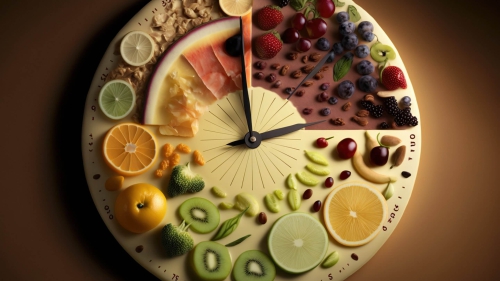Why Organics?

Organics have become an integral part of our food system. As a young child, I knew organics to be the fruits and vegetables in that one corner of the grocery store which did not seem to receive much attention. Today, grocery aisles are filled with organic products. It is not surprising that 82% of U.S. households purchased some type of organic products in 2018. According to the Organic Trade Association, organic sales were over $3 billion in 1997. In 2017, they soared to an astounding $45 billion. Most of these purchases were from retail chain stores with about 7% from farmer’s markets. So how is this industry regulated and what is driving its popularity? As a consumer, I wanted the full scoop.
The U.S. Department of Agriculture (USDA) is the government agency responsible for creating and implementing laws related to farming and food. The USDA has defined criteria for organic certification of raw and processed foods and individual ingredients. According to the USDA, organic products have been “produced through approved methods that integrate cultural, biological, and mechanical practices that foster cycling of resources, promote ecological balance, and conserve biodiversity.” In short, that means products must be made without the use of synthetic fertilizers or pesticides, antibiotics or growth hormones, genetic engineering, irradiation, artificial ingredients, or additives. Livestock must be fed organic feed.
In order to receive organic certification, farmers and food handlers must submit an Organic Farm Plan or Organic Handling Plan to a USDA accredited agency outlining their farming methods. These agencies conduct site inspections to confirm the responsible practices outlined in the plan. The USDA has a rigorous process for organizations seeking to become accredited agencies. Organizations must submit applications along with descriptions of their standard operating procedures. After the applications are reviewed, a pre-decisional audit and interview are conducted to make sure the certifiers can successfully carry out the given responsibilities. After accreditation is granted, regular audits are conducted at different intervals to ensure continued compliance with certification requirements. There are currently eighty accredited agencies; forty-eight are in the United States and thirty-two are in other countries. Before products can be imported into the United States, they must be certified by international USDA accredited agencies.
The USDA identifies four categories of products that may have organic certification: crops (that will be harvested for food, animal feed, or used as soil nutrients), livestock, processed products, and wild crops such as wild mushrooms. A wild crop is a plant that is harvested without being watered, fed, or agriculturally managed. Wild caught seafood cannot be organic certified since it is not possible to control their feed and there are currently no regulations for organic certification of farm raised seafood.
The USDA has specific guidelines for labeling of organic products. The accredited agencies review and approve all product labels. The product will display the USDA organic seal and the name of the certifying agency. The ingredients listed in the nutrition panel should have an asterisk to denote their organic status. There is a National List of Allowed Substances which outlines non-organic ingredients which may be used in certain organic products.
There are three main types of labels for organic foods.
| Label | Meaning | USDA Seal Displayed? | Example |
| 100% Organic | All ingredients and processing agents are organic certified | Yes | ● Organic milk
● Meat and poultry ● Raw produce ● Raw grains ● Nuts and seeds |
| Organic | All agricultural ingredients are organic certified
Any non-organic ingredients do not exceed 5% by volume or weight Organic ingredients marked with an asterisk (*) |
Yes | ● Processed foods
● Juice ● Frozen foods ● Some yogurts ● Baked goods |
| Made with organic ingredients | Contains 70% organic ingredients
The remaining 30% must come from the list of allowed substances |
No | Organic ingredients will be identified in the ingredient panel |
Consumers usually choose organics for two reasons: health benefits or disease and pesticide avoidance. As a dietitian, I am asked about the necessity of organics and what they can do for us. My response is that it is a personal choice—it must take into account where and how often you shop, your budget, how you handle and store food at home, and most importantly what your overall diet looks like. Here are the most common “organic” discussions I have with consumers:
1. Organic produce has higher nutrient value.
All fruits and vegetables are nutrient powerhouses—they contain vitamins, minerals, and antioxidants (these protect us from cell damage and the effects of aging). Organic plants are grown without the use of synthetic pesticides so they make higher levels of antioxidant compounds to protect themselves against insects. These high levels of antioxidants are beneficial for us too. Also, organic produce tends to be smaller because synthetic fertilizers are not used to speed up their growth. The nutrients are more densely packed. However, it is important to remember that the characteristics of conventional and organic produce can vary by day. Two organic tomatoes may look identical but can be very different in terms of their nutrient profile. The growing conditions, the particular season, and when the produce was harvested—all make a difference.
2. You want to avoid pesticides.
There is still debate on the level of pesticide exposure that can cause adverse effects. Populations at higher risk include young children, pregnant women, older adults, and those with weak immune systems. Organic farming may use natural pesticide sprays which are sourced from flowers or natural oils. While they still leave some residue, research has shown that pesticide levels are lower compared to non-organic produce. Washing produce well, practicing good personal hygiene around food, and cooking the vegetables are easy ways to remove most residues.
3. Why does organic produce spoil so quickly?
Organic produce may not last as long as non-organic produce because chemical preservatives are not used. Good food storage practices can help prolong the life of organic produce. Most fruits should be allowed to ripen at room temperature away from direct sunlight. Apples tend to last longer in the fridge. Most vegetables (except tomatoes and potatoes) can be stored in the fridge. If you are using plastic bags to store produce, poke a few small holes in them to allow the release of moisture. Add paper towels to your salad bag to help absorb excess moisture.
4. Organic milk has omega-3’s.
The omega-3 content of milk is based on the cow’s feed. Conventional milk comes from cows that consume grains, like corn. Organic milk is produced from grass-fed cows and contains higher levels of omega-3’s. The recommended amount of omega-3’s is 0.5 - 1.0 gram per day. One cup of organic milk contains 0.18 grams. Although the overall amount in milk is very small, it is still a plus.
5. How are organic eggs different?
Organic eggs come from free range hens that have access to the outdoors. Similar to milk, the benefits of organic eggs come from the hen’s diet. Hens given organic feed will produce eggs with higher omega-3’s. Antibiotics are not used in these hens. According to the U.S. Poultry and Egg Association, if conventional hens ever receive antibiotics for illness, the antibiotics must be FDA approved and given at acceptable levels. The FDA regulates products to make sure the antibiotic residues do not appear in the egg.
Although organic products cost more than non-organic products, they are richer in antioxidants and omega-3’s; avoid the use of synthetic chemicals and fertilizers; and are regulated. With higher nutritional values, more environmentally friendly farming, and adherence to certification standards, it is easy to see why organics are gaining popularity with consumers.
*****
Summaya Ali holds a Master’s degree in Nutrition from the University of Illinois and is a Registered Dietitian. She is excited to begin her career in Dietetics.
Reprinted from the Summer 2019 issue of Halal Consumer© magazine with permission from the Islamic Food and Nutrition Council of America (IFANCA®) and Halal Consumer© magazine.

















